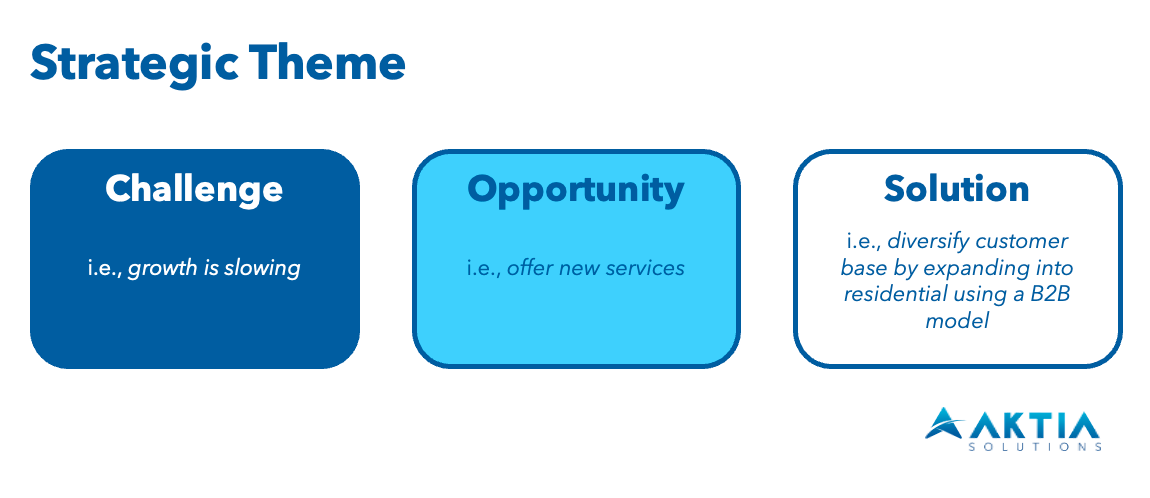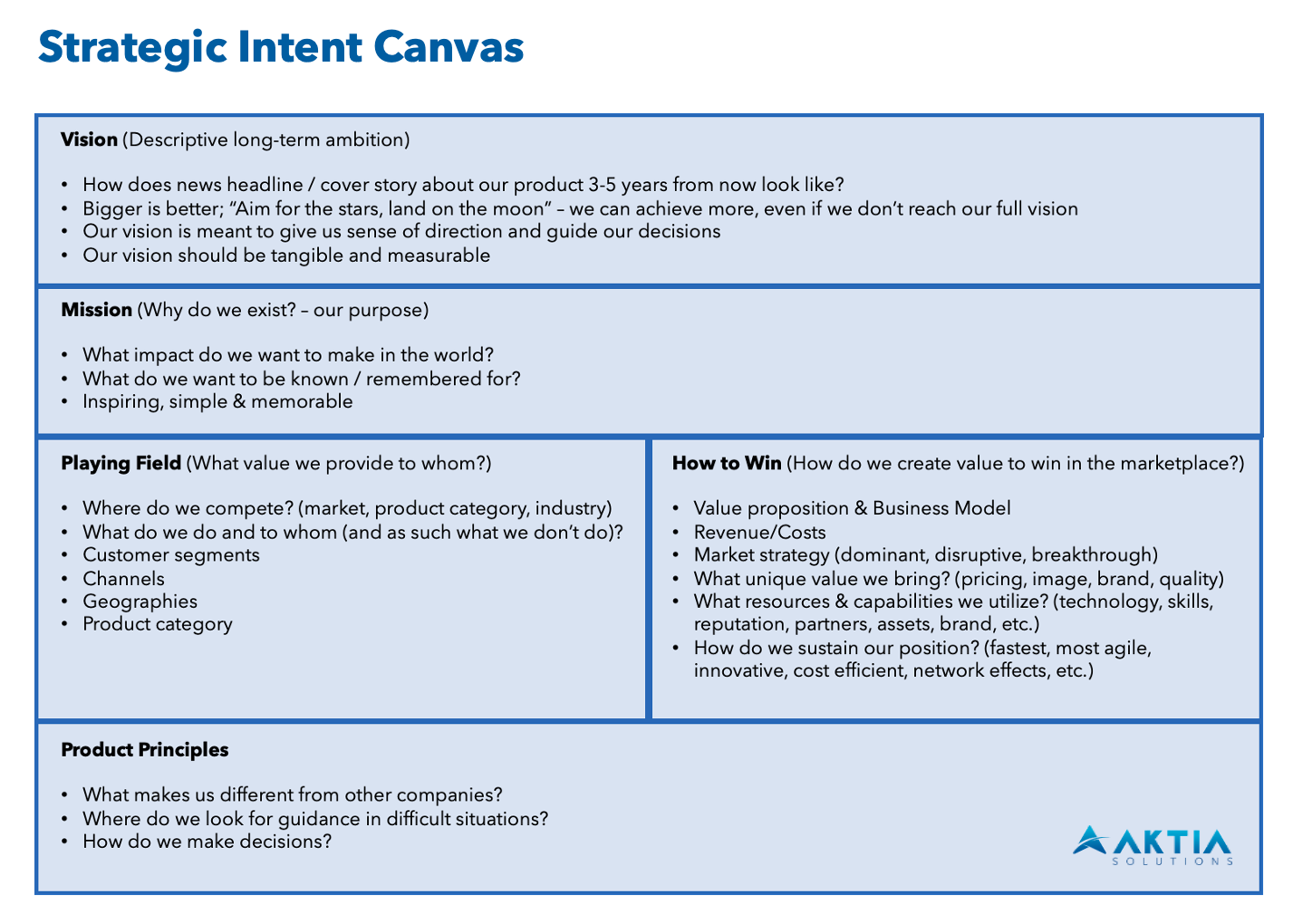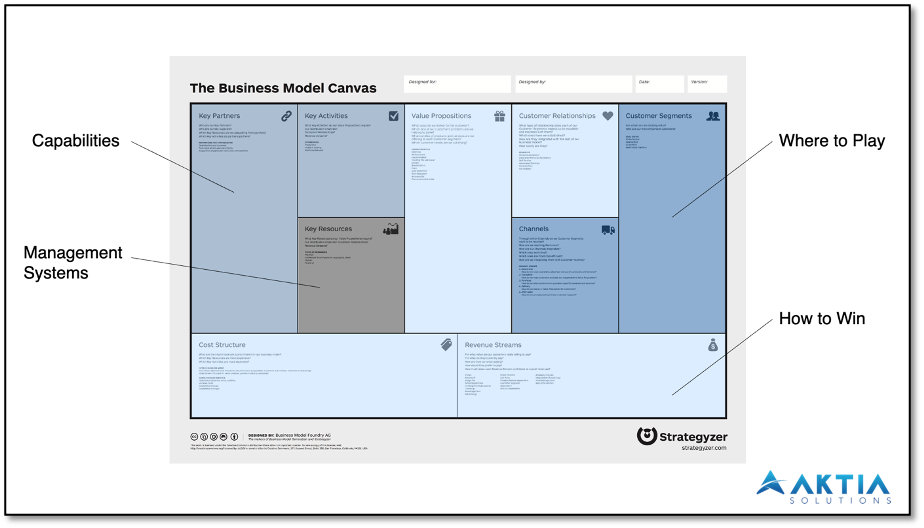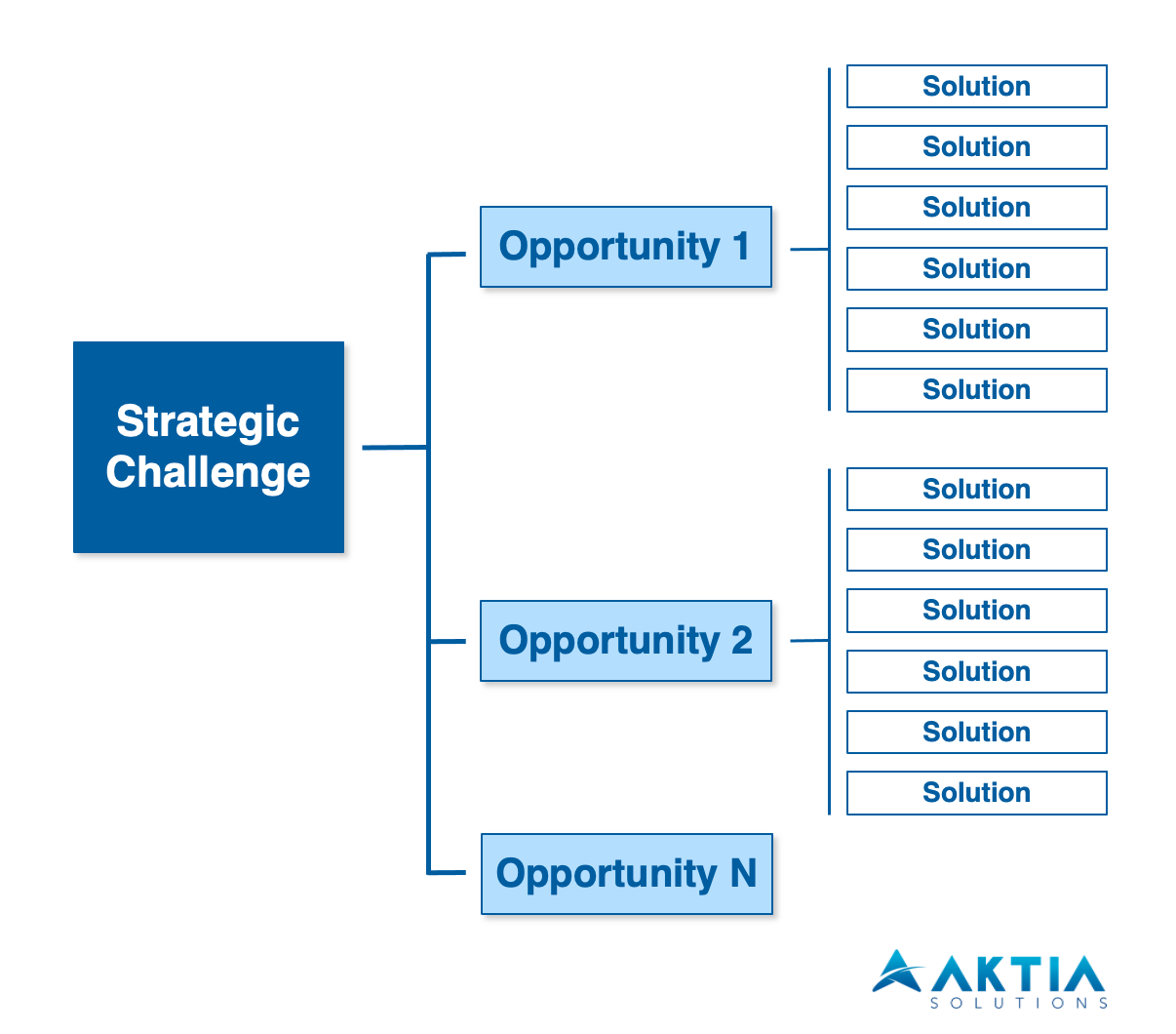Share this
Digital Product Strategy, A Summary For Digital Product Leaders
by Gerard Chiva on Jan 13, 2024 5:25:04 AM

A carefully thought-out digital product strategy is crucial in a time of rapid innovation and intense competition. It acts as a roadmap to direct decisions about products, coordinating them with more general corporate objectives and guaranteeing steady growth.
Product managers, heads of product, chief product officers, and CEOs are expected to gain a thorough understanding of digital product strategy, its essential elements, and the efficient design and implementation of one from this extensive guide.
What is not Strategy
Just as important as knowing what strategy is, is knowing what it isn't. A strategy is more than just a list of objectives or an aspirational declaration. It's not a to-do list or a comprehensive strategy. It's not about following every market opportunity or responding to what your competitors are doing.
Making thoughtful decisions, concentrating on where to play and how to win, and coordinating these decisions across the entire organisation are all parts of the strategy.
What is Strategy
In its broadest definition, a strategy is a high-level plan created to accomplish one or more overall or long-term goals in the face of uncertainty.
It entails establishing precise goals, comprehending the market landscape, assessing the capabilities of your company, and formulating a strategy that capitalizes on your advantages and mitigates your disadvantages.
A long-term roadmap that describes the goals and direction of a product or a product line is called a digital product strategy in the context of product management. It summarises your objectives and your strategy for achieving them, acting as a road map for decision-making and fostering teamwork towards common objectives.
We looked at the three main ideas of strategy development in an earlier article:
- Strategy is the work.
- Learning is a journey in strategy.
- Putting a plan into action
Principle 1: Design is Strategy
The design-like aspect of strategy is an important concept to keep in mind when formulating strategies.
This suggests that developing a winning plan requires understanding the situation and identifying the main problem that has to be addressed. This calls for a thorough understanding of the market environment, rivals, and the internal operations of the company.
When we view strategy as a design quandary, it becomes easier to apply a methodical and data-driven approach to identify important opportunities and difficulties, and then create a plan of action to address them.
Principle 2: The Path of Strategy
The idea that strategy should be viewed as a journey rather than a destination is yet another essential guideline.
This principle's main idea is that strategy is a continuous process of understanding and adjustment in response to new opportunities and challenges rather than a one-time event.
A metaphorical representation of business strategy would be an ascent up a hill with the goal of reaching a particular top.
But such an ascension is not without its challenges, which must be overcome in order to proceed. These "obstacles" or hurdles could be more focused and urgent in character, or they could include a wider range of long-term issues.
Principle 3: Execution is Strategy
The final basic rule of strategy formulation highlights the need to carry out the plan. A plan that isn't carried out well is just a mirage.
Execution and strategy are two sides of the same coin.
A model approach looks beyond the "what" of the objectives you hope to accomplish. It includes both the "how" and the "why" of your behavior. It is an effective synthesis of thought and deed.
To put it simply, coming up with a plan is not enough; you also need to create an organisation that can work as independently as possible to achieve the desired outcomes.
Business Strategy vs Digital Product Strategy
Although they both aim to accomplish organisational objectives, business strategy and product strategy function at distinct levels and with different scopes.
The business strategy offers a broad framework that defines the mission, vision, and objectives of the organisation. It describes how the business will generate and provide value for its clients, successfully navigate the market, and turn a profit.
Digital product strategy, on the other hand, functions inside this broad business plan. It outlines how a certain product or product range will support the objectives of the company. It describes the intended market for the product, the benefits it will provide, how it will differentiate itself from rivals, and how it will change over time.
An Example
Imagine that you work for a microprocessor company and are a member of the executive team. Your team has decided to restructure the company plan and concentrate on emerging industries like IoT, mobility, communications, or artificial intelligence instead of producing Hoover cleaner microchips.
As leaders in Integrated Device Manufacturers (IDM), do you intend to take on Intel and Samsung? On the other hand, are you thinking about becoming a foundry leader similar to TSMC? Maybe you're thinking of taking Broadcom and Qualcomm on in the communications space? Or are you thinking about making a move into the AI industry?
These are critical choices that your company needs to make. In addition to selecting the industry to work in, you'll also need to devise a winning plan and determine what skills and management systems your company needs to succeed.
After deciding on the company approach, the product teams or divisions have to come up with a winning digital product strategy. If you want to work in communications, for example, you may design WiFi microprocessors, mobile platforms, or 5G modems.
Components of a Digital Product Strategy
There are two distinct phases involved in creating your digital product strategy utilising our strategy design method: formulation and validation.
The first phase focuses on developing strategic awareness and identifying realistic paths through the development of strategic themes.
These three themes—a strategic obstacle, a prospect, and a resolution—are among the most important parts of the strategy formulation process.
A decision on "Where to Play" and "How to Win" defines this resolution and together they form the basis of the strategic theme.

Following the assessment and deployment of strategic themes, the next phase of the strategy design sprint is identifying hypotheses and carrying out experiments to validate them, ultimately selecting a winning strategy.
You can use the Strategic Intent Canvas that is provided below to summarise your strategy and connect it to your product vision, mission, and enduring values.
This canvas helps you clarify your digital product strategy and make sure that it is consistent with your overall goals and objectives.

A sustainable business model is the ultimate expression of a successful digital product strategy. The business model is a result of strategy, not its essential component.
Business Model
Establishing the business model is critical at this stage of the digital product strategy process. To do this, we'll apply the strategy of asking, "What needs to be true?" This process helps identify the essential assumptions and constraints that will affect the business model's design and implementation.

An invaluable tool is the Business Model Canvas, which streamlines the representation of the key components of the strategy flow: the value proposition, the marketplace, the main activities (capabilities), the resources (management systems), and the revenue and expenditure model.
How to Design a Winning Digital Product Strategy
In our book "Strategy Design Sprint," we go over the various phases that go into creating a successful digital product strategy. The following steps make up the digital product strategy design sprint, which we carry out in a series of group workshops:
- Product Vision
- Situational Awareness
- Challenges
- Opportunities
- Solutions
- Evaluate
- Hypothesize
- Prototype
- Test
- Decide

Product Vision
A product vision is a high-level, long-term objective that outlines the future state of a product or service and the ways in which consumers will utilise it. It is an aspirational statement that gives stakeholders and the product team motivation and guidance.
It is a crucial component of the creation of the digital product strategy since it gives the team direction and unifies everyone behind a single objective. It can also aid in team motivation and decision-making, guaranteeing that the final product fulfils client needs and remains loyal to its original intent.
Situational Awareness
Because it enables you to comprehend the present state of your industry, your competitors, and your clients, situational awareness is crucial in business. With this knowledge, you'll be more equipped to decide how to position your business, what goods or services to provide, and how to react to market developments.
Maintaining awareness of your environment and being able to foresee future developments will help you develop a more adaptive and flexible business plan that will better handle any obstacles that may arise.
Challenges
A team must overcome unique, challenging issues or barriers known as "strategic challenges" in order to realise its product vision. The secret to taking on a strategic issue is to tackle it methodically and thoughtfully, combining rigorous execution, inventive thinking, and analysis.
Opportunities
A strategic opportunity is a choice that establishes a company's competitive landscape and priorities in order to generate value for clients and accomplish goals. It's a high-level, long-term decision that gives the company's actions direction and guidance.

Solutions
Conversely, a strategic solution is a planned course of action intended to deal with a particular issue or situation. Based on the previous strategic decisions, this is a more tactical decision.
A strategic solution usually focuses on accomplishing a certain aim or target and could include introducing new systems or processes, modifying the company's business model, or launching a new product or service.
Evaluate
We assess the various solutions at this stage of the design sprint.
"Is this the best way to win this market segment?" is one of the queries we pose. or "Is this the most effective approach to gain a competitive edge?" alternatively, "How does this plan ensure a 30% increase in revenue?"
As soon as you are happy with the answers you have chosen, you may begin testing and prototyping various approaches.
Hypothesize
We now need to rank the hypothesis that supports your notion in order of risk.
Before putting a business idea to the test, you must clearly state all the risks associated with its failure. The basic presumptions of your concept must be transformed into distinct hypotheses that you can test.
The next stage is to create a prototype and conduct testing to validate the most risky assumptions. To obtain feedback and data on the assumptions, may entail developing a basic version of the product or service and carrying out user testing or other types of market research.
The business model can then be improved and the uncertainty surrounding the riskiest assumptions can be decreased using the test results.
Prototype
Now, it’s time to validate the riskiest assumptions through prototype and testing.
The business model canvas is a tool you can use to visualize and understand the key elements of a business model, including its value proposition, customer segments, channels, and revenue streams. It can be used to identify the riskiest assumptions underlying a business model, and then to design a prototype and tests to validate those assumptions.
Test
We can use one prototype to run multiple tests, one prototype per test or we can sequence a series of small prototypes with their corresponding tests to gradually increase the strength of the evidence.
To design the test, we will use a template to indicate the hypothesis, the type of test, and the condition of satisfaction.
Decide
Here, we have to choose whether to carry out the plan, go back to a prior stage of the procedure, or scrap the idea and go with one of the parked solutions or even one of the other options.
It is crucial to properly deliver a winning strategic candidate to senior management and business stakeholders after it has been identified through the strategy formulation process. For such important presentations, we strongly advise using our extensive pitch deck guidance to guarantee an engaging and convincing pitch.
Strategy is, as you know, design, but it's also emergence and discovery. For this reason, product discovery is crucial as a link between the formulation and application of strategies.
Exploring the Connection between Digital Product Strategy and Digital Product Discovery
Design serves as the basis of strategy since it helps us overcome obstacles, but the strategy also takes on a life of its own once we start the process of finding new products. Product discovery is essential to strategy development since it helps identify what to construct and informs strategy based on insights and lessons gained along the way.
Developing a successful product strategy requires effective product discovery. Before choosing to invest in an idea's growth, it entails investigating and verifying it.
Your digital product strategy is influenced by your understanding of the needs, preferences, and pain points of your customers through product discovery. It guides you in defining your product vision, goals, and initiatives, and it helps you figure out where to play and how to win.
On the other hand, your efforts in product discovery are guided by your product strategy. It offers the structure for ideation and validation, ensuring that the solutions you create support both your business goals and your product vision and ambitions.
How to Deploy an Effective Digital Product Strategy
Careful planning, alignment, execution, and evaluation are necessary for the successful deployment of a digital product strategy:
- Alignment: Ensure that your digital product strategy aligns with your business strategy and that all teams understand and are in agreement with the strategy.
- Execution: Translate your strategy into actionable plans. This includes developing a product roadmap, aligning resources, setting timelines, and defining key performance indicators (KPIs).
- Adaptation: Be ready to adapt your strategy as market conditions, customer needs, and business priorities change. This requires regular review and adjustment of your digital product strategy.
- Measurement: Regularly measure and evaluate your progress against your product goals. Use these insights to refine your strategy and initiatives as needed.
Our strategy design sprint ends with a decision to implement a strategic solution. Now is the time to outline the main goals of the digital product strategy and the product roadmap that will help achieve them.
Digital Product Strategy Execution
Product roadmaps and OKRs, or objectives and key results, are two crucial instruments for successfully putting a digital product strategy into practice. They guarantee alignment and allow for ongoing assessment and modification of the plan as it develops.
The go-to-market plan is a crucial but sometimes disregarded component. Your business plan, product, and digital product strategy could all fail even if they are all very good without a strong go-to-market strategy developed with the help of product marketing experts.
We make sure of this by involving product marketers from the start, but particularly after the start of the product discovery process. As a result, they are able to start developing the go-to-market plan and assist the product team with marketing-related tasks and their knowledge of clients, channels, and the market.
FAQs
- What is a digital product strategy?
A digital product strategy is a comprehensive plan outlining the development, launch, and growth of a digital product to achieve specific business objectives.
- Why is a digital product strategy important?
A digital product strategy helps businesses stay focused on their goals, allocate resources efficiently, make informed decisions, adapt to market changes, and ensure long-term success.
- What are the key components of a digital product strategy?
The key components of a digital product strategy include understanding the market, identifying the target audience, defining clear objectives, and achieving a product-market fit.
- How can I measure the success of my digital product strategy?
You can measure the success of your digital product strategy by tracking key performance indicators (KPIs) and analyzing user feedback.
- What is product-market fit?
Product-market fit refers to the alignment between your digital product and the demands and expectations of the target market. It is essential for ensuring the long-term success of your digital product.
Conclusion
Product leaders who want to achieve product success and business growth must master the art and science of digital product strategy in today's dynamic business climate.
The foundation of efficient product management is digital product strategy. It entails comprehending your target market, creating a compelling product vision, establishing precise objectives, and determining important efforts.
A thorough understanding of the market, strategic thinking, and alignment with company strategy are necessary for designing a successful digital product strategy. Its successful deployment necessitates meticulous preparation, execution, and ongoing evaluation and modification.
Digital product strategy and product discovery are correlated with each other. Your digital product strategy directs your efforts in product discovery, and product discovery informs your strategy.
As this guide has shown, a well-designed digital product strategy is an effective instrument for bringing teams together, directing decision-making, and assisting in the development of products that genuinely connect with consumers.
Did you like this article?
We enable leaders to become highly valued and recognized to make an impact on the World by helping them to design Digital Product Companies that will thrive and nourish in the Digital Age, we do this by applying our own ADAPT Methodology®.
If you are interested in knowing if you have what it takes to design and build a great digital product company simply take our Digital Leadership Influence Scorecard.
If you want to know how we can help you to start your transformation please check out our: Training.
If you are interested in doing a transformation in your company please check out our: Consulting.
Share this
- Agile Methodologies (18)
- Product Strategy (18)
- OKRs (16)
- Scrum (16)
- Product Mindset (14)
- Project To Product (10)
- Agile Retrospectives (9)
- CoPs (9)
- Knowledge Sharing (9)
- Time To Market (8)
- Product Discovery (7)
- Continuous Improvement (5)
- Strategy (5)
- Scrum Master (4)
- Content Marketing Strategy (3)
- Product Owner (3)
- Technical Excellency (3)
- Digital Transformation (2)
- Innovation (2)
- Scaling (2)
- Team Building (2)
- Business Model (1)
- Cost Of Delay (1)
- Customer Feedback (1)
- Customer Journey (1)
- Customer Personas (1)
- Design Thinking (1)
- Digital Leadership (1)
- Digital Product Tools (1)
- Go To Market Strategy (1)
- Google Design Sprint (1)
- Lean Budgeting (1)
- Lean Change Management (1)
- Market Solution Fit (1)
- Organisational Impediments (1)
- Outsourcing (1)
- Product (1)
- Product Metrics (1)
- Product Roadmaps (1)

Organisational Mastery
Get your free copy

ADAPT
Get your free copy

Product First
Get your free copy


